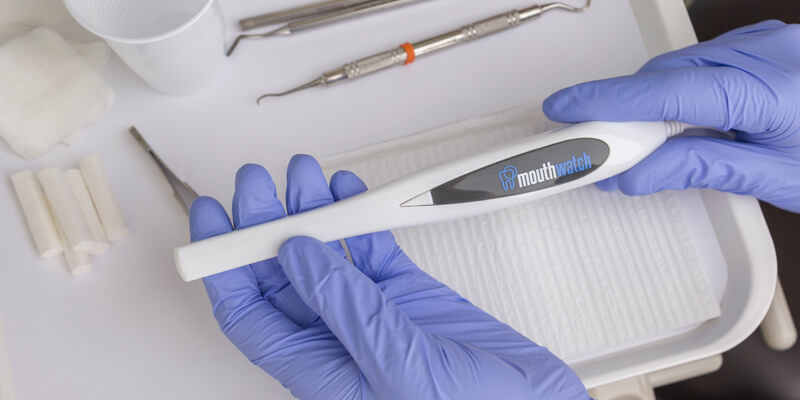
You started in the career of dentistry because you wanted to help people. Maybe you didn’t anticipate that successful dentistry requires more than technical and clinical skills. Soon you found out though that it requires conversation skills, relationship building, and, let’s just say it: sales skills too. I hear dentists when they say they don’t want to be a salesperson (who does?) and they just want to do what they were trained for: dentistry. Let’s face it: being able to relay information and create a sense of value and urgency for the treatment is part of being able to deliver care.
What if that urgency and perception of the value of treatment could be created without “selling”?
Technology has your back.
One of the simplest ways to increase case acceptance without any selling is to get intraoral cameras in every operatory.
We can talk about fractures or the need for a crown only to be dismissed — until it hurts.
Put a crystal clear intraoral image on the screen. Allow the patient to visualize the problem, and even ask questions. The value of the treatment, its urgency, is clear before their own eyes — before the problem worsens and becomes painful. Pain doesn’t have to be your sales person either.
Be a Tour Guide
It’s not just case acceptance but wider patient education and trust building that results from using intraoral imaging. Here’s one particular technique as a hygienist I often will take: create a “tour” of the mouth with a video recording from your intraoral camera, or a series of pictures. Document any areas of concern or use them as monitoring milestones for future reference.
After the images are completed sit the patient upright to allow for an eye-to-eye conversation and clearly point out any areas of concern. Upright positioning is less intimidating and allows them to better see the monitors and feel as a part of the conversation rather than talked down to. (Tip: It’s always helpful to take an image of a healthy tooth for comparison!) Here’s another key tip: one of the most important things to do is to allow the patient to ask questions so they become invested in their own dental care.
The Value in Preparing for Exams
When a hygienist can competently discuss with the patient areas of concern, they are going to ask the dentist to evaluate. This allows the patient to be prepared with questions for the doctor. Often, I will address the concerns of a darkening filling or fracture with patient and explain that the dentist “may talk about these” before he or she examines the patient’s mouth. Once the dentists arrives for the examination I reiterate the information to the doctor so he/she knows what has already been discussed and the patient hears it once again. Once the doctor provides an evaluation, there really is no sales pitch needed — the patient has seen the need for themselves with their own eyes.
Using X-ray in Conjunction with Intraoral Imaging for Periodontal Cases
Intraoral cameras can be very impactful in periodontal therapy recommendations. Periodontal disease can often be a “silent problem” with the patient noticing few issues before coming in. Many are surprised when these problems are diagnosed. In-turn they are reluctant to accept treatment. By using x-ray images in conjunction with intraoral images, I’ve found that even the most reluctant patient can accept treatment recommendations. If more visual evidence is required, acquire an image with the periodontal probe within the pocket to show the findings.
Intraoral Cameras Are a Clear Investment Winner
Investing in intraoral cameras pays off with the first few patients who accept treatment based on the intraoral imaging they see. And it doesn’t have to be a large investment to get one at every chair. You can be less of a salesperson when the dentistry sells itself!
